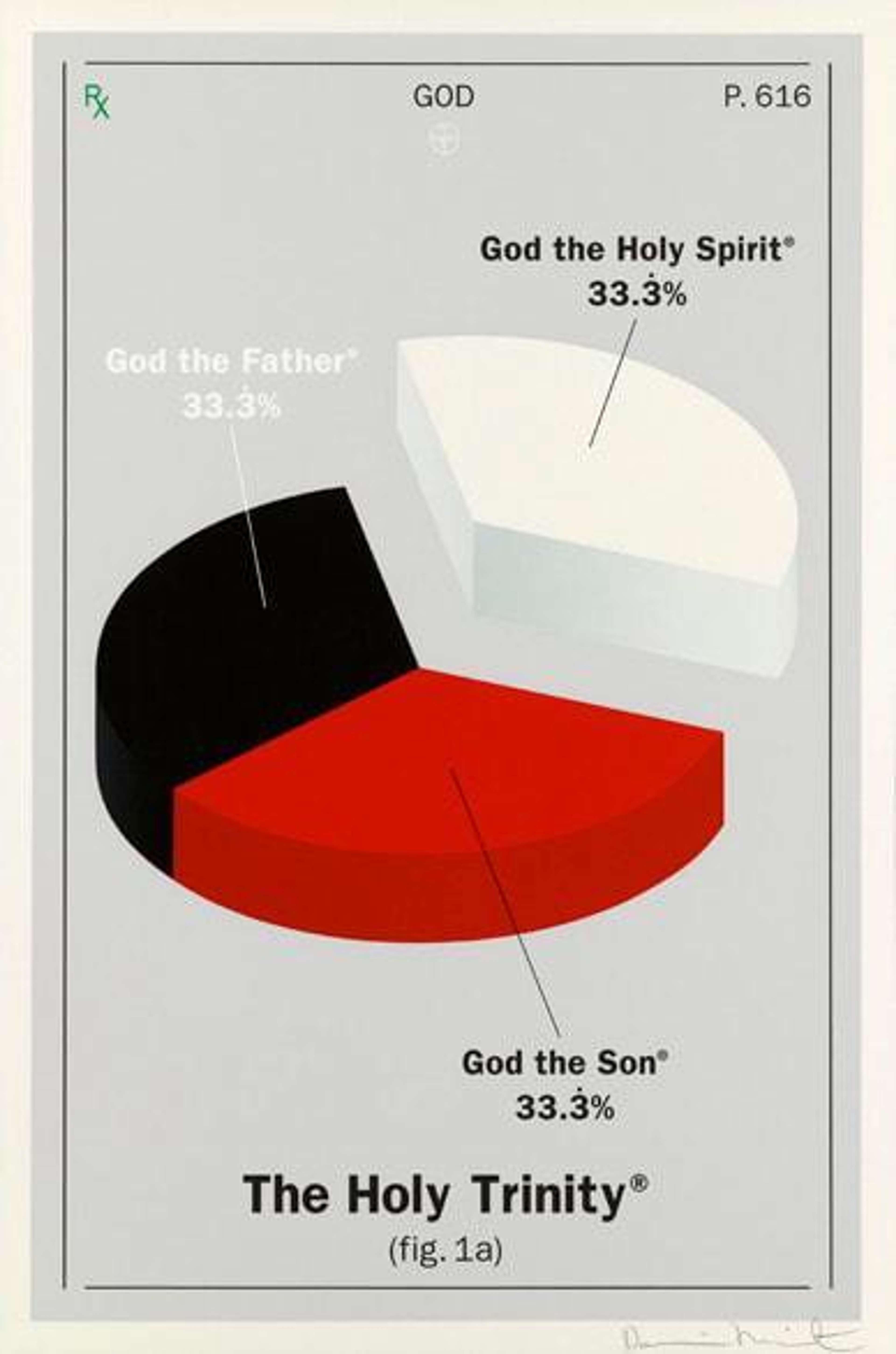
The Holy Trinity

The Holy Trinity
Signed Print
Damien Hirst
Price data unavailable
AAGR (5 years) This estimate blends recent public auction records with our own private sale data and network demand.
There aren't enough data points on this work for a comprehensive result. Please speak to a specialist by making an enquiry.
Medium: Screenprint
Edition size: 80
Year: 2005
Size: H 100cm x W 68cm
Signed: Yes
Format: Signed Print
TradingFloor
Track this artwork in realtime
Watch artwork, manage valuations, track your portfolio and return against your collection
Meaning & Analysis
Published by the Paul Stolper Gallery, The Holy Trinity is a work that was first shown at the New Religion exhibition in 2005. The print by British artist, Damien Hirst, depicts a pie chart with three segments, in red black and white, which represent the Holy Trinity. It is a print edition of 80 and is signed in the bottom right corner.
Once again, The Holy Trinity is a depiction of how Hirst intertwines religion and science. This 2005 print is typical of his interest in the unwavering faith that people have in both science and religion. Hirst stated, in 1991, “I can’t understand why some people believe completely in medicine but not in art, without questioning either”. Fourteen years later he was still exploring this topic. God the Father, God the Son, and God the Holy Spirit are represented as numerically equal. Hirst uses a scientific graph, a form of statistical representation to convey this point. This is typically subversive. Of course, the concept of the Holy Trinity cannot be distilled into numerical valuation.
The print may be compared to several other works by Hirst in which this topic is further explored. New Religion (Sky), also produced in 2005, depicts a grid-like structure in which various references to biblical passages are juxtaposed with medical supplies. The same is true of Stations Of The Cross IV, Jesus Meets His Mother, where Hirst takes a very similar visual approach. Though he has, strayed away from this issue, the question of why many people lack an unwavering faith in art has comprised a significant part of his oeuvre.